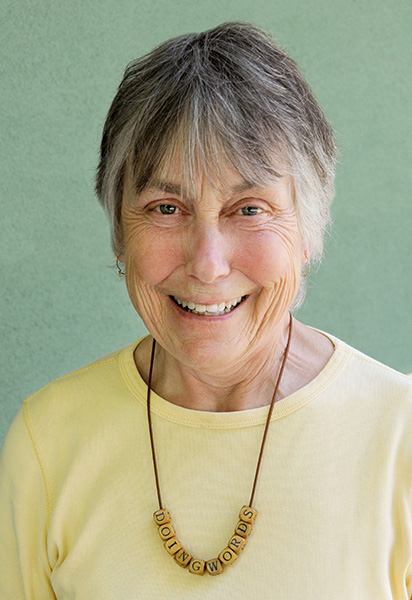Hopscotch Spelling
I am not, and never have been, a fan of middle school. First of all, it has an awful name – a non-name, in fact. (Middle of what, I always wonder.) All the children in those ages, 11-14, are amazingly complicated: they need support, but reject it; they want support but are suspicious of it; they believe they are invincible but are frightened of how they are seen by others – especially their own peers. They want to be trusted and respected by their grownups, but they can’t be gracious about accepting help or – heavens! – love.
When my own children were in middle school – it was Junior High in those days, a condescending locution if there ever was one – they got on the school bus every morning at 7 with one personality and they got off the school bus every afternoon at 4 with another.
So when I was invited to come to a middle school in Kent to work with 32 middle schoolers in two special education classrooms on vision and neurodevelopmental issues (see Red Flags for Elementary Teachers), I accepted the proposal. Perhaps I was out of my mind, I thought, but perhaps I could identify some issues that would help their teachers.
And I enjoyed the whole thing. First of all, of the 32 there were thirty who had some neurodevelopmental needs which movement activities could help. Their teachers and aides gave them an extremely thoughtful and consistent classroom environment where they knew they were respected. And safe.
So we did eye-tracking and belly-crawling and knee-smacking and other exercises to make crossing the midline more automatic, and some of them read to me, and some of them did some writing with me, and some of them gained a little more confidence and success with literacy in all its parts.
Including spelling.
There was a big covered cement courtyard between their classrooms and the office, which no one seemed to be using very much when I was at the school, so we played hopscotch there. The first time I took 3 or 4 kids out there they thought it was pretty weird to watch me, with sidewalk chalk, make a 9-square grid on the cement about five feet square. I put a set of letters in the grid in no order, one in each square, naming them while the kids watched me. “Here is a, here is s, here is e, here is m…” and so on, adding b, n, l, t, f.
“Watch me spell ‘man,’” I said, and I jumped onto m, a, and n.
“Cinchy, yes?” I asked. “OK, Brian, spell ‘name.’”
Brian jumped on those four letters in order. “Right!” I said. They were all moving closer to the box to have a turn, so we spelled our way through a bunch of simple silent-e words for 8 or 10 minutes and went back inside.
There was a lot of “Can we do that again?” So of course we did, dealing with the irrational silent-e feature of English, double vowels, and some reversals (tab, bat) just for fun. I think they loved it, and I know I did.
Last week Kat, who is seven, joined me on the sidewalk for her first adventure in spelling by jumping. I drew a smaller grid, because she is small, but still nine squares. We had no silent-e possibilities (we will grow into them) nor double vowels (which the middle-schoolers quickly moved to).
We both had fun.
The possibilities are probably endless…. Two things will happen: the kids will want to “do spelling;” and they will get the patterns into their heads through their bodies. Incidentally they will get a little movement and a little confidence.
And, as education expenses go, sidewalk chalk is a cheap date.
Suggestions :
Use b, l, c, k, i, a, e, m, n to make silent-E words with I and A – bake, lake, like, bike, mike, make, cake, came, fame, name,
Use e, a, s, m, t, r, b, h, l to make EA words – seam, team, tear, hear, heal, seal, meal, meat, eat, seat….
August 2020

 RSS Feed
RSS Feed